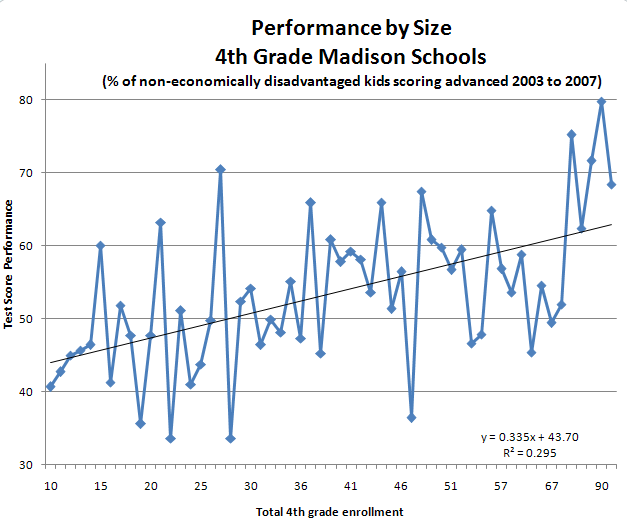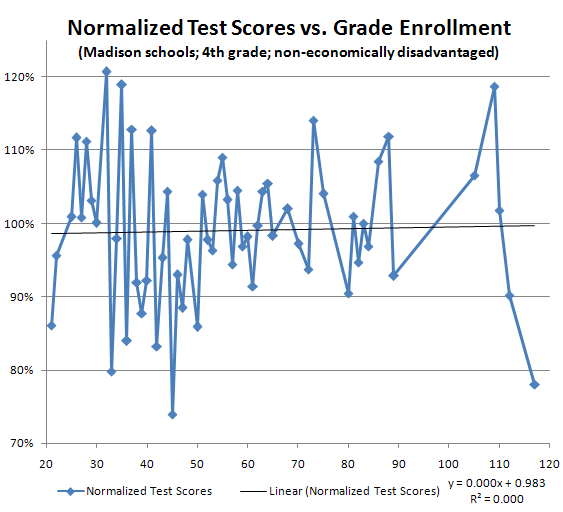As a fan of smaller schools, much as it pains me to write, I find that with respect to student performance, the size of the school does not matter at all. At least in Madison.
After reading this article from the WSJ, I became curious about the expert's statement that "Research so far, Odden said, fails to show a clear link between achievement and school size, particularly within the range of sizes in Madison." Frankly, I didn't believe him.
So I dug into the data and, it turns out, given the limited amount of data I used, it seems there is absolutely not correlation between school (or in this case, class) size and test performance.
Now that is not to say small schools should be eliminated. There are other positive attributes of small schools that I have not measured here. I'm only looking at (as I've referred to many times) the average total percentage of non economically disadvantaged students who achieve in the "advanced" score category for the statewide tests.
First try - Positive Correlation
Here's my first analysis. You can see what looks like a mild correlation between 4th grade class enrollment and performance. That is, the larger the school, the better the performance. It's pretty zigzaggy and the R-squared value is .295 which isn't exactly highly correlated but it is somewhat correlated.
Then I began to think, hmm... the newer schools are bigger and they tend to be in more affluent areas hence we might be seeing simply a correlation to location rather than really to size. Hence my next analysis.
Right Try - No Correlation
What I figured is that the test scores had to be normalized somehow to the school itself. We can't compare a big new suburban Madison school to an old urban school, right? We really can only properly compare scores within a school to itself.
Fortunately class sizes change within schools. So what I did was normalize the test scores to the schools' average test score. So the graph below shows test scores as percentages above or below the individual school's average plotted against the 4th grade enrollment.
E.g. a point at a grade enrollment of 30 with a value of 120% indicates that for some school having an enrollment of 30, they had a test score that was 20% higher than their average test score.
You can see now that the correlation (via the R-squared) is exactly 0.0. There is no relationship between school size and test performance.


No comments:
Post a Comment